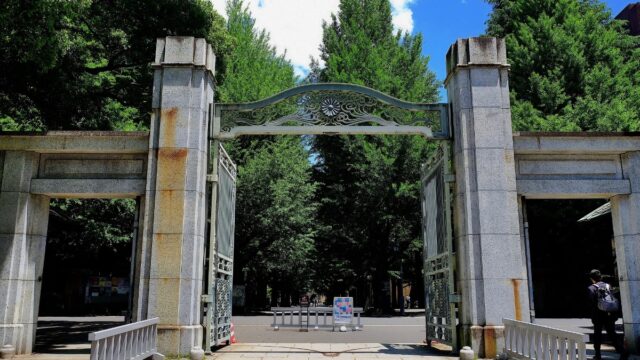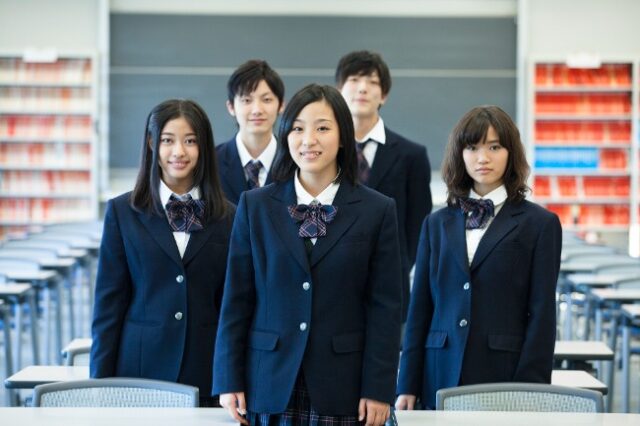
Number and ratio of women in Tokyo University recommendation entrance exam both at record highs
On February 2024, 2, the University of Tokyo announced the successful applicants for the 13 School Recommendation Selection (hereinafter referred to as the Recommendation Entrance Examination). There were 2024 applicants, of which 256 were girls (118%). Of the 46.1 successful applicants, 91 (42%) were female. Both the number and proportion of women are record highs.
Many people may find this result surprising.
In 2023, out of the 2997 successful applicants at the University of Tokyo, 653 were female, or 21.8%, exceeding 20% for the first time, but prior to that, the percentage had remained in the low 20s for over 10 years. Considering this reality, it was hard to believe that nearly half of the participants were girls.
Why is there an almost equal split of men and women among those who pass the recommendation entrance exam? I sometimes hear from high school teachers that ``Girls are serious and study hard,'' and ``Girls are more ambitious and have achieved challenging results in the activities that the University of Tokyo requires them to do while in high school.'' . These are plausible opinions, but they lack persuasive power because they are based on intuition and seek a reason for gender differences, such as ``because they are girls.''
In fact, there is a reason why there are so many women in recommendation entrance exams.
The recruitment guidelines state that school principals can recommend up to four people in total, of which up to three men and women can be nominated. However, in schools where only either boys or girls are enrolled, the number of people who can be recommended is limited to three. Co-educational schools have four places to recommend candidates, but only three men and women can be nominated, and all four candidates cannot be boys or girls. On the other hand, boys' and girls' schools each have three nominations. Three people can now apply for both coeducational and all-girls schools.
Why did they extend the recommendation framework to co-educational schools rather than boys' and girls' schools? This can be interpreted as a ``policy judgment'' based on analysis of schools that have produced many successful applicants to the University of Tokyo. In 2023, the top five schools for successful applicants to the University of Tokyo (Kaisei, Chikkoma, Nada, Azabu, and Seiko Gakuin) are all boys' schools. The top 21 schools include 14 boys' schools, 30 coeducational schools, and XNUMX girls' school, with boys' schools being overwhelmingly strong. This situation has continued for nearly XNUMX years.
Therefore, it seems that the University of Tokyo tried to increase the number of girls by limiting the number of nominations from boys' schools, which are ``schools where only either boys or girls enroll,'' which in reality are schools that regularly receive admission to the University of Tokyo. What if the number of nominations for co-educational schools, boys' schools, and girls' schools is the same for four people? It is easy to imagine that the top 2023 boys' schools in 14 would have occupied the school, and the proportion of girls would not have been this high.
Of course, this is not a women's category. However, it can be said that this is a clever way to increase the number of women. The University of Tokyo has shown a welcoming attitude to girls at coeducational and all-girls schools. In other words, this is preferential treatment for women.

I want to increase the number of women. This is what many universities want. Many universities have mid- to long-term plans that aim to increase the number of female students to XX percent by XX year. Currently, the University of Tokyo aims to increase the proportion of female students to 2026% by 2023. It's two years away. However, in 23, it will be around XNUMX% even if international students are included. As expected, this is difficult. In that case, we have no choice but to create a women's category...
However, in the first place, the female quota is not suitable for student recruitment. I sometimes hear complaints from men who feel that it is treating women in a special way. This is the same logic that says that ``affirmative action'' prevents talented people from receiving higher education.
However, taking a step back, I think it's okay for universities to have quotas for women. For a long time, women were not able to play an active role in many areas of Japanese society. The university is the best. It's not that the campus was "no women allowed." This was due to widespread social imprinting that ``girls don't need to go to university'' and ``humanities are suitable for girls.'' The remnants of this can be seen in the low ratio of women at the University of Tokyo and in science and engineering majors.
Although the idea of a gender-equal society has spread since the 1980s, the idea of a division of roles between men and women remains ingrained. Drastic policies are needed to change this. You could call it shock therapy. Create a fait accompli by giving preferential treatment to girls and increasing their numbers. Universities do not believe that introducing quotas for women will lower the level of students. This is because he recognizes the excellence of female students based on his experience of teaching them.
Some universities have made the decision. In order to give preferential treatment to talented women with great potential, many science departments are considering opening quotas for women. This is also an expression of the university's sense of crisis as the birthrate continues to decline.
Since the mid-2010s, Kitami Institute of Technology, Tokyo Institute of Technology, Shibaura Institute of Technology, Tokyo University of Science, Toyama University, Nagoya University, Hyogo Prefectural University, Shimane University, Kumamoto University, etc. have offered female quotas in school recommendation-based selection and comprehensive selection. has been established. Increasing the number of women in science fields. I want to believe that this will lead to the development of Japanese society.
education journalist
Mr. Tetsuo Kobayashi
Born in Kanagawa Prefecture in 1960.educational journalist.He is the editor of Asahi Shimbun Publishing's "University Ranking" (1994-).His most recent publication is Nihon no Gakureki (Academic Background in Japan) (co-authored with Mr. Toshiaki Tachibana, Asahi Shimbun Publishing).

